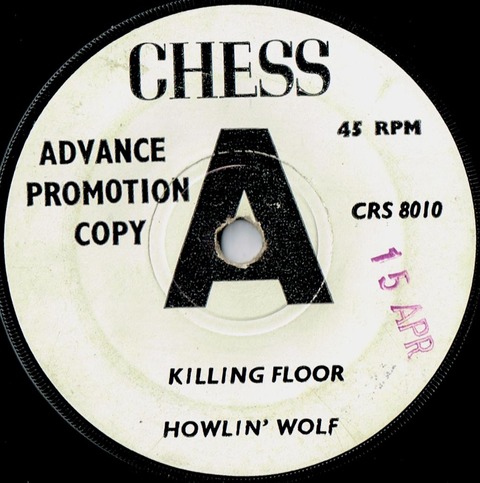

Hear My Train A Comin’ was a throwback to the Delta blues that Jimi recorded and played live throughout his career, most often through his trademark filter of psychedelia. I had to think long and hard about what I should do next.” 8. Jeff Beck felt equally blown away when he first encountered Hendrix play: “It wasn’t just his amazing blues playing I noticed, but his physical assault on the guitar… He hit me like an earthquake. The squalls of feedback he coaxes into a chimeric, wailing, far-out soundscape opened up virgin territory for generations of experimental musicians to explore.

In its final section, after a brief flirtation with the motifs of surf music (referenced in the lyric for comedy effect), Jimi pioneers the use of the Strat’s vibrato arm as an instrument in itself. This extraordinary slice of psychedelia described by Charles Shaar Murray as “hazy cosmic jive straight out of the Sun Ra science-fiction textbook” is often cited as evidence for Hendrix’s connection to jazz on account of opening major 9th chords, Wes Montgomery-style octave doublestops, its improvisational shifts and Hendrix’s close interplay with Mitch Mitchell, whose primary influence was Coltrane drummer Elvin Jones. Noel Redding played the ‘bass’ part on a “terrible, awful” borrowed hollowbody guitar on the original recording and would occasionally switch to guitar for this track on early tours. Virtually every surviving recording of Red House is a string- and mind-bending odyssey through the blues lexicon, unfurling like a fresh glimpse into Hendrix’s unconscious brain: the 3:50 version on the UK print of Are You Experienced, one of the first songs the Experience recorded, is just the tip of the iceberg. Live, Hendrix would often switch from his omnipresent Strat to a Gibson (usually a Flying V or SG) and promptly vanish into this welcome break from the pyrotechnic thrills expected of him to pay tribute to the elemental influences at the heart of his playing. Hard to believe, but there was once a time when you could doodle your way through a 20-minute cosmic blues jam, look up, and still see an audience. Image: Michael Ochs Archives / Getty Images 20. Hendrix at his last concert on 9 September 1970 in Germany. Instead, we’ve attempted to pick out 20 special moments from a tragically short career that illustrate the extraordinary variety of Hendrix’s playing and will reward you every time you return to them. Well, we haven’t included many obscurities in this list, for fear of displacing a better-known classic. These 25 recordings encapsulate the broad reach of Mississippi's influence on the blues.So when it comes to narrowing down that huge portfolio of material to his greatest 20 moments, where do you start, and how do you define ‘greatest’? So it's only fitting to celebrate some of the most noted musicians who came from Mississippi or whose ties to the genre were formed here.

Blues is inspired by place - the railroads, fields and slaughterhouses where the musicians once worked by day by the triumphs and struggles in life by love found and love lost.Īnd no place has produced more influential American bluesmen and women than the Mississippi Delta. Photo: Eric Shelton, Clarion Ledger, Illustration: Andrea Brunty, USA TODAY NetworkĪs the National Museum of African American Music opens its doors, journalists from the USA TODAY Network explore the stories, places and people who helped make music what it is today in our expansive series, Hallowed Sound. Photo: Eric Shelton, Clarion Ledger, Illustration: Andrea Brunty, USA TODAY Network Jimmy “Duck” Holmes plays his guitar in front of the Blue Front Café in Bentonia, Miss. Jimmy “Duck” Holmes plays his guitar in front of the Blue Front Café in Bentonia, Miss.


 0 kommentar(er)
0 kommentar(er)
